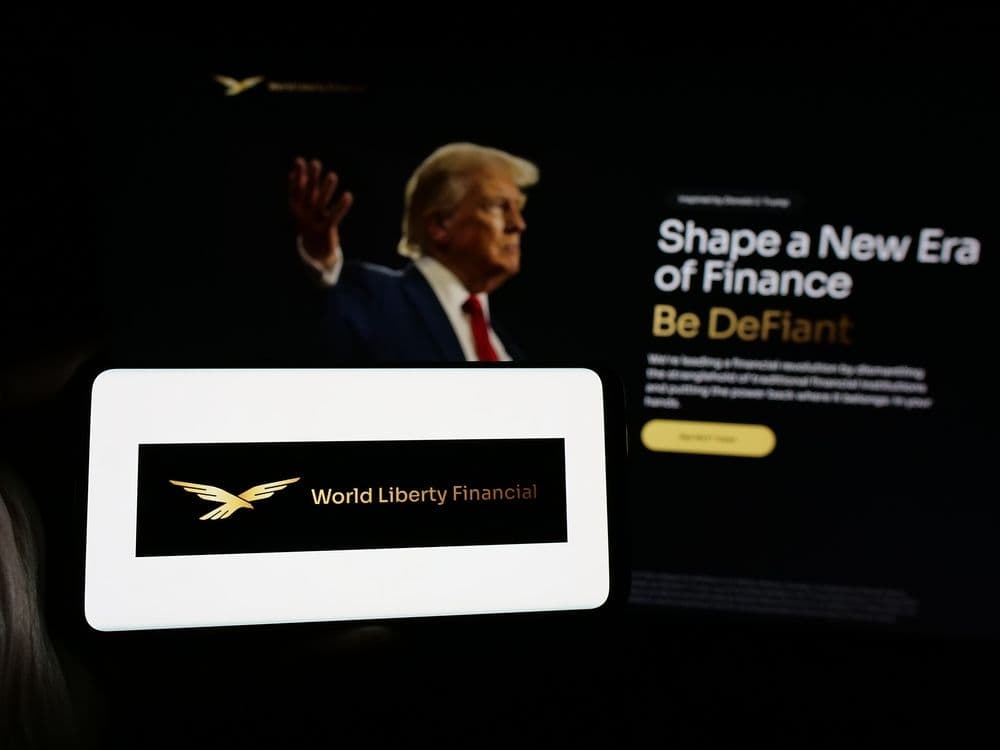World Liberty Financial, the Trump family-backed cryptocurrency project, resumed its token buyback program with a $7.79 million purchase of 46.56 million WLFI tokens, marking the first major accumulation since resolving a pre-launch phishing attack that compromised user wallets.
The buyback occurred over a five-hour period on Nov. 26, with the project spending USD1 stablecoin to acquire tokens at an average price of $0.1674, according to blockchain analytics platform Lookonchain. On-chain data from Arkham Intelligence shows the purchases executed through automated swaps on CoW Protocol, with transactions of approximately $132,000 occurring at five-minute intervals.
WLFI climbed 8% to $0.171 following the buyback activity, with 24-hour trading volume surging 26% to $320 million. The token now trades 20% higher on the week and 15% higher over the past month, recovering from lows near $0.15 that erased an estimated $1 billion from Trump family holdings.
What Happened
World Liberty Financial executed a total of approximately $10 million in token purchases over six hours, acquiring 59 million WLFI tokens through a Time-Weighted Average Price strategy, according to on-chain data compiled by multiple analytics platforms. The $7.79 million portion represents the largest concentrated window of activity.
The buyback resumes a program suspended for two months following September's phishing attack. On Nov. 19, WLFI confirmed that a "relatively small subset" of user wallets were compromised through phishing schemes and exposed seed phrases before the token's official launch. The project froze 272 affected addresses in September and initiated a comprehensive recovery process.
WLFI executed an emergency smart contract function on Nov. 19 that burned 166.667 million tokens worth $22.1 million from compromised wallets. The project simultaneously reallocated an equivalent value to verified recovery addresses after users completed Know-Your-Customer verification. On-chain analyst Emmett Gallic noted the function was designed for two scenarios: when investors lose wallet access before vesting or when malicious accounts acquire tokens through exploits.
The security incident sparked community division. Some users praised the project for taking responsibility and prioritizing safety, while critics argued the wallet freeze capability undermines decentralization principles. "I think it's hilarious how everyone is cheering that you can rug or lock any wallet on your own protocol," wrote pseudonymous blockchain developer 'flick' on X, expressing concerns about centralized control.
WLFI emphasized the breaches resulted from third-party security lapses, not flaws in its smart contract code. "This was not a WLFI platform or smart contract issue. Attackers gained access to user wallets through third-party security lapses," the project stated. Some cases linked to Ethereum's Pectra upgrade in September, where attackers planted malicious contracts in compromised wallets.
Read also: WLFI Plunges 20% as $23 Million Flows to Exchanges
Why It Matters
The resumed buyback signals World Liberty Financial's attempt to rebuild market confidence after the security crisis. The project's strategic reserve wallet, which holds over $860 million in assets, allocated $10 million specifically for this buyback program using protocol fees to fund automatic token burns and purchases.
Derivatives activity picked up alongside the buyback, with futures volume rising 24% to $582 million and open interest climbing 14%. Rising open interest during an upward trend typically indicates new long positions entering the market rather than short covering, strengthening the bullish outlook.
The token has declined sharply from its September peak near $0.26, reflecting broader challenges including partnership setbacks. ALT5 Sigma, which purchased $750 million in WLFI tokens, reported heavy losses. The ecosystem also faces regulatory scrutiny, with Senators Elizabeth Warren and Jack Reed calling for investigations into claims that tokens were sold to sanctioned entities.
Despite challenges, World Liberty Financial continues expanding its product offerings. The project announced a strategic investment in meme token SPSC, posting on X: "Buying $SPSC because the trenches finally found religion in USD1 memes." The move reflects efforts to diversify holdings beyond the core WLFI token and USD1 stablecoin.
One whale accumulated 165.79 million WLFI at $0.1508 over three days after spending $25 million in USD1 stablecoin, according to Lookonchain data, indicating sustained institutional interest despite recent volatility.
Final Thoughts
The buyback represents a critical test of market sentiment toward World Liberty Financial following the security incident. If WLFI holds above the $0.16 breakout zone, technical analysts project potential moves toward $0.19–$0.20 as long as buybacks continue and volume remains firm. A drop back below this level would weaken the technical setup and expose the $0.14 area, which acted as support through late October.
The project's roadmap includes launching a debit card and retail app in Q4 2025 or Q1 2026 to enable USD1 stablecoin spending via Apple Pay. Plans also call for tokenized real-world assets in 2026 and expanding the USD1 stablecoin to the Aptos blockchain.
The buyback-and-burn program uses 100% of protocol liquidity fees to purchase and permanently destroy tokens, removing approximately 47 million WLFI monthly. While this represents less than 0.2% of circulating supply, sustained execution could help offset future token unlocks as the project moves toward its goal of offering regulated, dollar-based financial products.
With 26.69 billion WLFI in circulation from a maximum supply of 100 billion, the token maintains a market capitalization near $4.5 billion, ranking it 25th among all cryptocurrencies. Success depends on executing the product roadmap, maintaining transparent security practices, and navigating ongoing regulatory scrutiny tied to its high-profile Trump family association.

